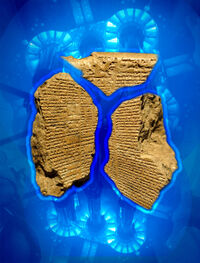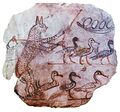High-energy literature: Difference between revisions
No edit summary |
|||
| Line 20: | Line 20: | ||
== Fiction cross-reference == | == Fiction cross-reference == | ||
* [[Descriptino]] | |||
* [[Extract of Radium]] | * [[Extract of Radium]] | ||
* [[The Frantic Doxologist]] | * [[The Frantic Doxologist]] | ||
Revision as of 10:45, 1 May 2018
High-energy literature is literature which uses techniques from high-energy physics.
Well-known works of high-energy literature include The Taking of Pelham 3.1415.
In the News
2015: Author, philosopher, and crime-fighter Umberto Eco publishes influential monograph on the origins and early development of high-energy literature.
1954: The EBR-1 in Arco, Idaho used in high-energy literature experiment.
Evil bit release may be caused by high-energy literature experiments, according to reader survey.
High-energy physics lab to enhance short stories using short wavelengths.
George Plimpton pleased with results of high-energy literature experiment.
New form of satire-absorbing agent developed by high-energy literature researchers.
Collapse of Meuse bridge (1275) stimulates frantic doxology. Bridge collapse can be averted using literary devices such as Cherenkov radiation.
Re-emitted red light suggests that Fugitive Rubies is secretly manipulating Papillon, say High-energy literature theorists.










